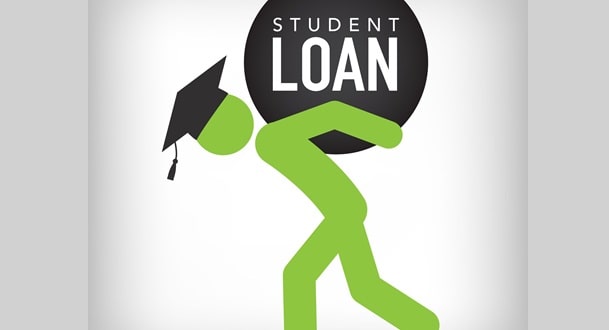Let’s say you are a student in India who has taken a student loan to pursue your dreams, right? Maybe you are already struggling to pay your loan back, or maybe you are just stressing out about it, like how would you pay that loan back in the future. In that case, things like student loan forgiveness might have crossed your mind, and you might have heard that such things exist in some Western countries. But the thing is, at the moment, there are not many student loan forgiveness schemes in India, still, we are here with a post where we will go over the possible advantages and disadvantages of student loan forgiveness. So yeah, here we go now.

Advantages of Student Loan Forgiveness
1. A Huge Weight Off Your Shoulders
Imagine keeping nasty student loans in check. Yeah, that’s the dream student loan forgiveness is selling. Over in India, where many students bank on loans to get through college, the debt beast doesn’t just vanish post-graduation. It sticks around, eating into your savings plans, or dreams of snagging a home or starting a family. Wiping out this debt? It’s like unlocking a new level where you can funnel your money into building a solid future. Plus, it’s not just about easing up your wallet’s issues, nah, it’s about snagging the freedom to dive into career paths and opportunities without debt playing a big role.
2. Kicking the Economy into High Gear
When people aren’t chained down by debt mountains, they’ve got more money to play with. This isn’t just good news for their wallets; it’s like a power-up for the whole economy. More spending means a more demand for goods and services, which could lead to more jobs and pump up economic growth you know? In a giant like India, with its endless consumer crowd and booming middle class, the splash from increased spending could be huge, quite literally!
3. Making Education a No-Brainer
The terror of a debt pile-up can scare off many from higher education. But, throw in the chance of loan forgiveness, and suddenly, higher education looks a lot less daunting. This is mega in India, where education is the golden ticket to upgrading your job prospects and social status. Tearing down the financial barricades opens up the education gates to more people, setting the stage for the country to hit its big goals of economic and social upliftment you know?
4. Fair Play, Finally
Here’s where student loan forgiveness plays the hero, you see, it’s all about slicing through inequality. In India, it’s the ones from the tougher backgrounds who get slammed hardest by education loans. This debt trap loop can clip their social mobility wings. By nixing some of that debt, we’re not just handing out free passes; we’re ensuring everyone gets to the starting line on equal footing.
5. The Government’s Got Your Back
The Indian government isn’t snoozing, either. They’re rolling out all sorts of schemes to ease the student loan headache. From slicing interest rates to handing out merit-based freebies, they’re all about lightening the load. These moves are a shout-out that they’re here for the student, making sure pursuing a degree doesn’t translate to a lifetime of debt dodging.
Disadvantages of Student Loan Forgiveness
1. Is It Really Doable?
So, here’s the deal: clearing student debt sounds awesome, but can we actually pull it off without breaking the bank? Think about it. In India, where the budget’s gotta stretch to cover everything from health to highways, finding the extra cash for ditching student loans might mean cutting corners elsewhere, right? And here’s a thing you see, if banks start seeing loans getting wiped clean regularly, they might just hit the brakes on lending out more. That’ll leave future students in a bit of a tough situation, struggling to find the funds for their education.
2. Tuition Through the Roof?
Now, here’s a twist nobody wants: erasing student loans could end up making college pricier. Quite the opposite of the cause, right? See, if colleges catch wind that debts might get forgiven, they might just hike up the fees, thinking students will borrow more, expecting it to be forgiven. It’s a vicious cycle of rising costs and deeper debt. In India, where a diploma is seen as a golden ticket, this could slam the door on many hopefuls, making the climb to a better life even steeper.
3. Riskier Bets
Ever heard of moral hazard? It’s a fancy term for when folks feel like they can gamble without worry because they won’t face the fallout you know? With student debt forgiveness on the table, some might borrow more than they really need, thinking it’ll get wiped away eventually. This mindset doesn’t just spell trouble for lenders, it sets a dodgy trend of playing fast and loose with cash. In a country as diverse as India, fostering such a carefree attitude towards debt could cause a lot of trouble.
4. Fair Game? Really?
Fairness is the name of the game, and student loan forgiveness needs to play by the rules. There’s a real risk that the folks who don’t really need the help end up scoring the most benefits. It makes you wonder, is it fair to use public funds to clear the slate for people who might not need that help? In India, where the divide between the haves and have-nots is wide and deep, we need to tread carefully to avoid making inequality even worse, right?
5. Economic Ups and Downs
And here’s the million-dollar question: does wiping out student debt actually make economic sense? Sure, it could put more money in people’s pockets short term, but the long-term benefits for the economy are up for debate. In India, where every rupee counts, we gotta weigh up if this is really the smartest way to splash the cash.
Student Loan Forgiveness FAQs
Q1. Are there any student loan forgiveness programs in India?
Ans: You see, at the moment, India does not have any official student loan forgiveness schemes because then everybody will be jumping on it, right? But yeah, in countries like the US, UK, and Australia, such schemes exist for students, not for all of them, but there are some criteria.
Q2. How can financially less privileged students manage their education loans in India?
Ans: Well, there are some Non-Banking financial companies, which you may know as NBFCs, that provide flexible repayment options to take off some stress for you. And yeah, the Indian government is also trying its best to come up with different loan options with flexibility and lower interest rates too.
Q3. What happens if a student loan is not paid on time in India?
Ans: Well, there are a few things that can happen, like a bad credit score, interest piling up, and yeah, legal actions too.
Q4. Can NBFCs offer better loan management solutions than traditional banks?
Ans: In most cases, Yes! But that’s all because of the flexible loan management solutions, apart from that, the interest rates are pretty much the same.
Q5. How does student loan repayment work in other countries?
Ans: There are two ways, either you graduate, take a job, and start paying those bills, or you can apply for a student loan forgiveness program, in which, most of the time the student must pay a set number of payments, and the remaining debt is cleared.
Q6. What alternatives to loan forgiveness can borrowers explore in India?
Ans: Not many, apart from just working part-time, managing expenses well, and then paying off those bills, and that’s pretty much it.
Anantha Nageswaran is the chief editor and writer at TheBusinessBlaze.com. He specialises in business, finance, insurance, loan investment topics. With a strong background in business-finance and a passion for demystifying complex concepts, Anantha brings a unique perspective to his writing.


